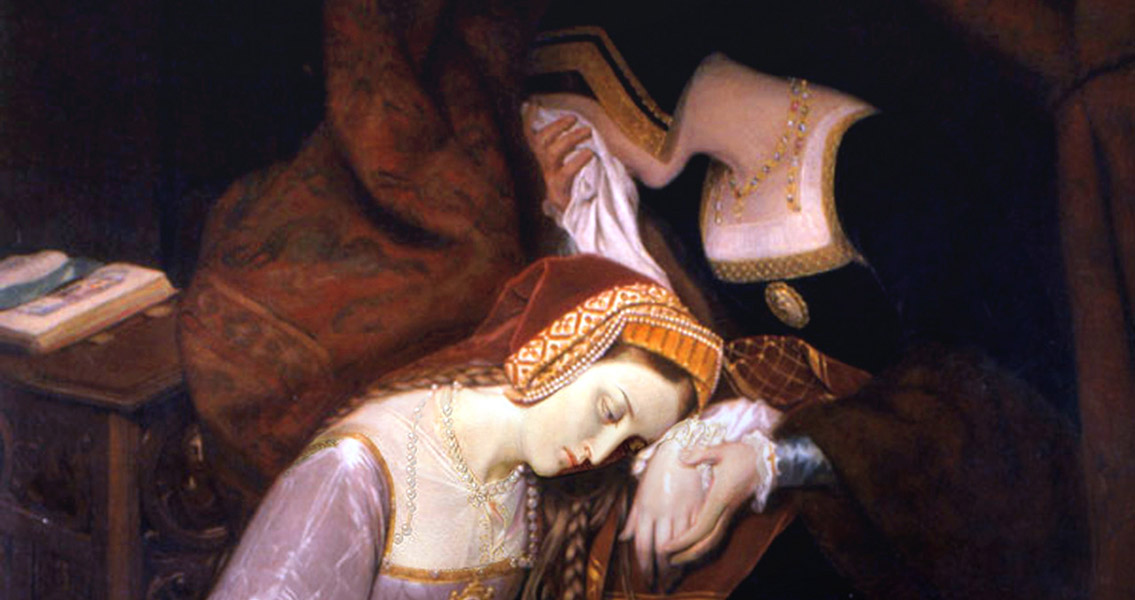<![CDATA[The second wife of the notorious Henry VIII, Anne Boleyn, was beheaded on 19th May, 1536. Already controversial for having divorced his first wife, the popular Catherine of Aragon, and declaring himself the head of the Church in England, the execution of Anne Boleyn further cemented Henry's reputation as one of the most extreme kings in English history. Boleyn herself left a massive mark on the monarchy, despite only ruling for three years. Although she, like her predecessor, failed to give Henry the male heir he so desperately desired, Boleyn was the mother of Elizabeth I who went on to rule over a crucial period of change and development in England. Often overlooked due to her larger than life husband, Boleyn's own story is a fascinating one which ultimately ended outside the Tower of London, the queen accused of adultery, treason and incest. Born sometime between 1501 and 1507 to Sir Thomas Boleyn and Lady Elizabeth Howard, Anne Boleyn spent much of her youth in France due to her father's career as a diplomat. Her time on the continent afforded her experience working with royalty, her father arranging service for her with Archduchess Margaret of the Netherlands and Queen Claude of France. Returning to England in 1522, Boleyn's wit and charm soon won her a position in Henry VIII's court. Serving as a lady in waiting to Henry's wife Catherine, Anne gathered admirers in the court, not least Henry Percy, the 6th Earl of Northumberland. It is believed pair secretly got engaged sometime around the middle of the 1520s. Henry VIII, himself an admirer of Anne who had also used her sister Mary as a mistress for sometime, heard of the marriage and quickly acted to stop it taking place. Henry Percy was removed from the King's court, dashing Boleyn's hopes. Initially she resisted the King's advances, refusing to become his mistress while he was already married, and wary of any connection with him due to the scandals that had surrounded her sister. For seven years Henry kept up his pursuit of Boleyn while desperately trying to win an annulment from Catherine of Aragon. At some point the couple started discreetly courting, and in 1533 Boleyn found herself pregnant; upping the urgency for a wedding if Henry's child wasn't to be born a bastard. The couple got married in secret and Henry issued the Act of Supremacy, breaking England from the Vatican and kick starting the Reformation. In June 1533, Boleyn was crowned Queen of England in an elaborate ceremony at Westminster Abbey. Three years after Boleyn's crowning, she was dead. What exactly happened in the relationship between King and Queen is shrouded in mystery, however. Officially, Boleyn was executed on charges of treason, adultery and incest, but to this day historians have little idea as to just how accurate these charges were, or why Henry and Anne's marriage had failed so dramatically. One thing for sure is that in early May four courtiers: William Brereton, Francis Weston, Sir Henry Norris and Mark Smeaton, were taken to the Tower of London where they were tried and convicted of committing adultery with the queen and plotting to kill the King. Several days after these initial convictions Boleyn and her brother, Lord Rochford, were taken to the Tower of London. Both were found guilty of high treason and incest, and awarded the death penalty. Boleyn, and the five convicted members of the royal court, were all executed on Tower Green on 19th May. Two days before, the Archbishop Thomas Cranmer had annulled Boleyn's marriage to Henry, and just a few hours after she was executed he issued a dispensation allowing Henry to marry Jane Seymour. Boleyn maintained her innocence through her trial and until her death, but the damming evidence was that Smeaton confessed to having had intercourse with the queen three times, although this admission could have been extracted under torture. Many historians claim the real reason for the execution was that Boleyn, like Catherine of Aragon, had failed to bare the King a male heir, their only son being stillborn earlier in 1536. Others have argued that Boleyn's fate was just another example of the King's increasingly erratic behaviour, perhaps brought on by a jousting accident. Exactly what caused Henry VIII’s and Anne Boleyn’s marriage to fail will likely remain unknown; ultimately Boleyn’s shocking execution was just one of a multitude of remarkable events in the life of the erratic Tudor King.]]>
Anne Boleyn Executed For Adultery, Incest and Treason
